Minolta Autocord Review: The First Serious Japanese TLR
Last Updated on February 18, 2023

In this Minolta Autocord review, we will discuss in detail the features that make up the various versions of this popular TLR camera manufactured by Minolta.
The Minolta Autocord is definitely a camera that has its own personality in the world of TLRs, and is considered one of the best medium format cameras to start with.
There are many versions of the Minolta Autocord released between 1955 and 1966, but most of its features remain the same across each of this series. Let’s start by looking at what they are before discussing in detail its operation, history and pros-cons.
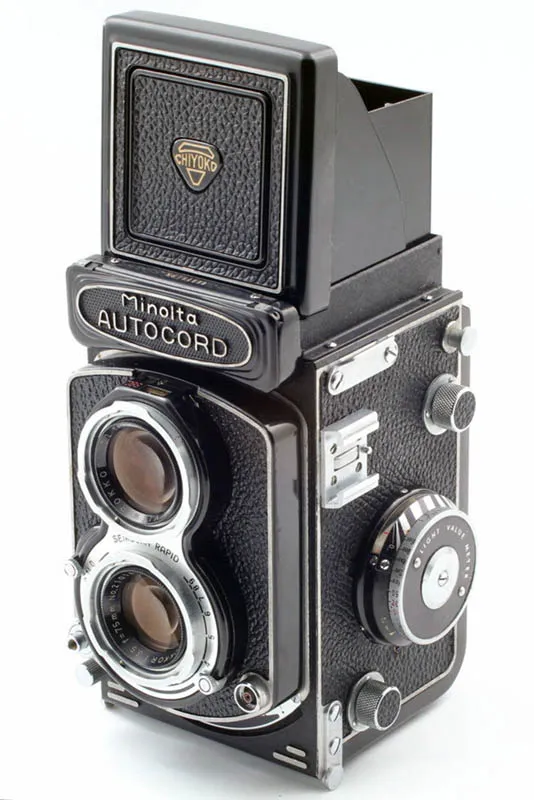
Table of Contents
Specifications
| Year release: | 1955 |
| Camera type: | Twin lens reflex (TLR) |
| Film format: | 120 film, 6×6 |
| Lens: | Chiyoko Rokkor 75mm f/3.5 in 4-elements, Tessar-type |
| Minimum focus: | 3.3 feet (1 meter) |
| Shutter: | Leaf shutter, Seikosha/Optiper/Citizen |
| Shutter speed: | 1 to 1/500 sec, bulb |
| Flash sync: | PC port, M/X, All speeds |
| Self timer: | 10 sec |
| Dimensions: | 5.5 x 3 x 4 inches |
| Weight: | 990 gr |
History and overview
The Minolta Autocord is a 6×6 Twin Lens Reflex camera, released by Minolta (Chiyoda Kogaku Seiko) in 1955 and kept until 1966 with the continuous release of versions that barely differ. There will be no significant changes in terms of specifications but technically.
The predecessor of the Autocord was the Minoltaflex released in 1937, a TLR with a very basic mechanics that resembles a soviet Lubitel, but of course of better quality.
In Minolta’s 35mm cameras, we were already used to its confusing way of assigning names to its camera set, it is not different for its TLR series. But I will try to make a simple summary.
Basically there are 5 versions and each one has a particular change that differentiates it. And we will not talk about the different leaf shutters just now but there were three; Optiper, Seikosha and Citizen. All versions maintain the same 75mm f/3.5 lens.
- The Autocord M: They correspond to the output version of the line, characterized by having a maximum shutter speed of 1/400s. Eg: Autocord MXS
- The Autocord L: It is a line that is launched in parallel with the M, but which differs by having a maximum shutter speed of 1/500s and having a selenium light meter.
- The Autocord of 1958: It does not carry any denomination and is the most standard of all. It maintains the 1/500s maximum shutter speed and does not have a light meter.
- The Autocord RG (I, II, III): Same features as the 1958 version, with slight design changes.
- The Autocord I, II and III of 1965/66: In the II and III a support for 220 format film is already included.
- The Autocord CDS (I, II, III): All include an electronic CdS light-meter, and only the II and III have support for 220.
See the complete list of Autocord versions.
As we see, most of these versions retain the 1/500s maximum shutter speed and no measurement. Some will include an analog selenium meter, and only the latest versions an electronic Cds meter. On the other hand, very few will have support for 220 film.
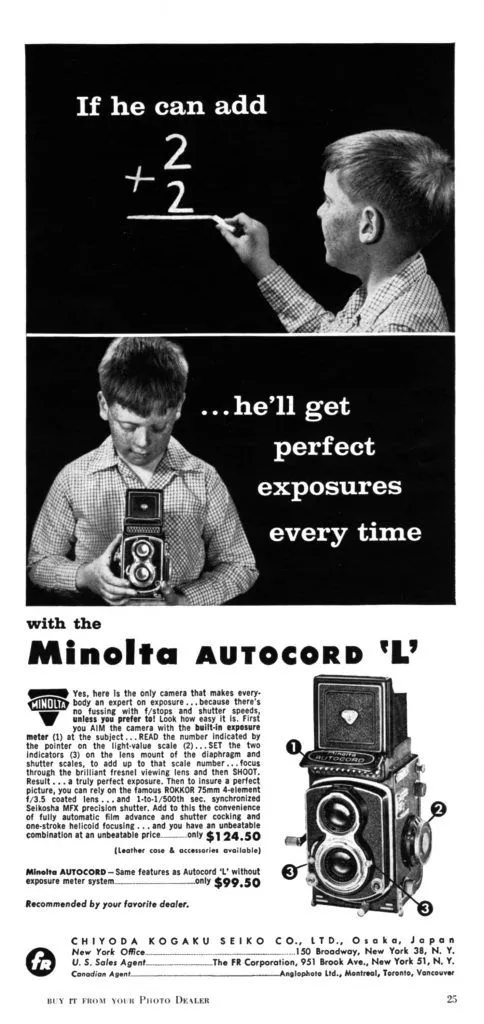
The most popular versions in the United States were the L version and the 1958 versions. The Autocord was focused on being a low budget alternative of the Rolleiflex, although technically it competed more in range with the Rolleicord.
Design
The design of the Autocord retains the classic shape of the TLR’s, it has a tight and very similar size to the Germans. If you put a Rollei next to it, you will hardly notice discrepancies in terms of its dimensions, it is millimeters higher. On the other hand, the focusing knob also protrudes from the right side of the camera, a factor that makes it more bulky in comparison to the Minolta.
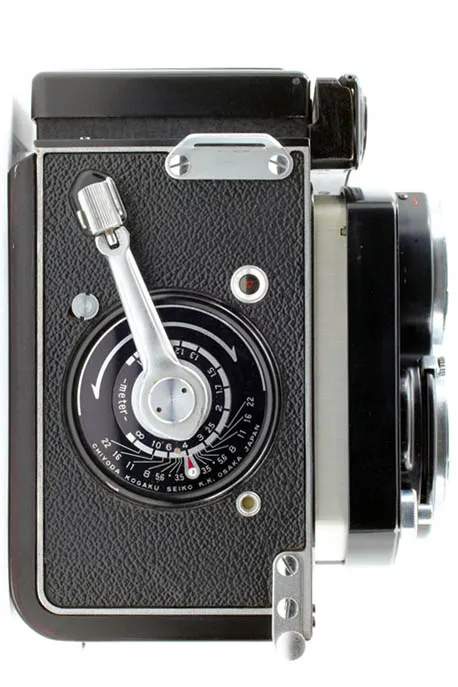
This happens because something particular of the Autocord is that it has a focus lever on the bottom of the camera, so it does not use a knob to focus like the rest of the traditional TLR’s. This can and cannot be a disadvantage, and it is that it is a delicate part and tends to break if you give it a generous blow.

The Autocord does not use knobs for anything, the aperture and speed selectors are in the traditional position (opposite sides of the lens) but they are not knob but lever level. They move vertically and do not have stops in their path, so you have to look through the speed/aperture window to know that the position has been adjusted correctly.
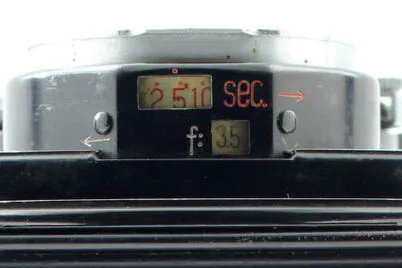
The Autocord includes a flash shoe mount for external flashes on its left side, something that its German peers also do not bring. This feature, although very simple, is one to which the success of this camera is due (in addition to the price).
Lens
The lens that comes with every Minolta Autocord is a Chiyoko Rokkor 75mm f/3.5 constructed from 4 elements in 3 groups, Tessar-type. And another similar lens for viewing with an aperture of f/3.2.

This Rokkor despite not being 2.8 like its counterparts in this range, the Yashica Mat 124g or the Mamiya C330, is spectacular in terms of the results it offers, capturing images with great detail sharpness.
It has a good “bokeh” and you won’t notice the difference to a 2.8, an excellent level of contrast and practically no distortions can be seen. But of course, at this type of focal distances they are not very easy to appreciate, but in photographs with lines such as a landscape, they would be appreciated and this lens passes the test. Look at the photos at the end of the post.
It should be noted the effort made by Minolta to create a budget-friendly lens that would face the German ones, and it is that at that time Minolta was one of the few Japanese brands that were doing it. A few years later, Yashica and Mamiya would appear to join.
Shutter
The Autocord uses a leaf shutter which is located between the back of the lens and is part of it. This is due to the characteristics of this type of shutter. This also works as the diaphragm or the one that regulates the light aperture. Shutter speeds range from 1 second to 1/500s (1/400s early models) and bulb.
Throughout the years of Autocord production, the camera could come with one or another shutter. And for a long time it was the only indicator of the model you could possess.
The three shutters used in the Autocord were Optiper, Seikosha and Citizen. Which were followed by M,X and/or F. Which referred to the type of shutter they supported for the use of flash. Of course, this was not a rule, we already know that Minolta follows the order of chaos in the naming of its cameras, to the point that sometimes it is the users who end up giving their cameras a name.
Anyway, the distinction of one shutter to another will only be noticed by experts in the matter, I have checked on the internet and they seem to have no distinctive quality between them. The only thing they might have in common is that they can fail due to lack of lubrication. And this happens when they have been stored badly
Flash capabilities
As we mentioned before, one of the most noteworthy details of this camera is having a flash shoe mount, which expands its possibilities. Minolta took advantage of this small detail to surpass Rolleiflex, which does not have one.
Of course, the flash shoe is only half of the equation, the PC socket and different types of flashes that can be mounted on the camera are the most important part.
The PC port for the flash is nicely aligned with the shoe, so ergonomically speaking it works. Aesthetically it also flows with the design, since it is set right next to the shutter button.
As for the modes or types of flash that the camera accepts, there are three: M for bulb flashes, X for electronic (stroboscopic) flashes, and F for lamps designed for cameras with a focal plane shutter.
Viewfinder

The Autocord comes with the waist-level finder that some call the “chimney“. The viewfinder screen is clear and bright, covering 100% of the image on the negative. You can say that what you see is what you will capture. But shooting at the minimum focusing distance (3.3 feet) you will probably have a very small margin of error on the top part, which is normal for all TLRs.
In the middle of the viewfinder screen there is a circle which is used to adjust the focus, which works even better if combined with the foldable loupe that comes inside the finder. In addition to the circle, on the screen we find frame guides for 4×4, and this camera was used for this format as well. All that is required is an additional 4×4 crop accessory that is inserted into the film housing.
Metering
The most common versions of Autocord come without a light metering system. Only the L versions, with a selenium meter (no battery needed) and the CDS versions, which integrate an electronic meter with CdS sensors.
To measure in the fully manual versions an external meter is required, either a handheld meter such as a Sekonic or similar, or one that fits into the flash shoe mount, which are usually spot measurement meters like this one.
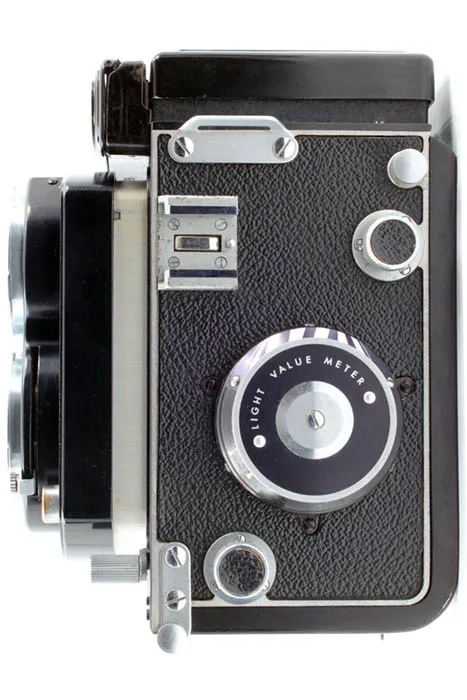
The versions with a light meter, either selenium or electronic, are easy to identify by the design of the upper front. Selenium ones have a plate formed by small spheres on the inside (hidden behind the badge and requires opening), and the CdS sensor ones are identified by the two protrusions on the top that resemble an android with eyes (very creative description, I know).

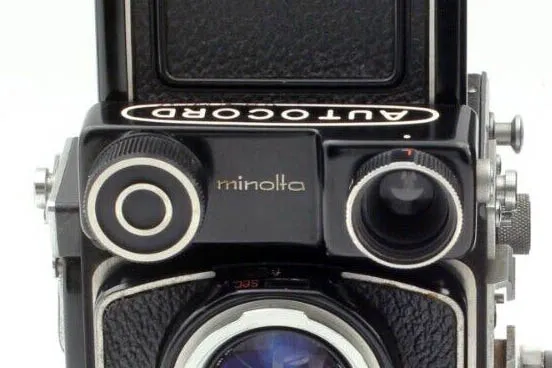
Autocord CDS Battery
The right “eye” of the CDS version of the Autocord is the actual sensor that receives the light and measures it. Whereas the left “eye” is the storage of the mercury PX-1 battery (1.35v), which are no longer manufactured nowadays. As a replacement, the Alkaline LR-50 can be used, which at 1.5v may not be precisely accurate in the measurement, but is still usable.
If you want to go further, a better way to adapt the original batteries is to use an MR-50 adapter, which will contain an SR44 battery (very common), which will fit into the space of a PX-1 and reduce its voltage from 1.55v to 1.35v.
Price and buying guide
The Minolta Autocord has one of the most variable prices you can find on a camera, from $80 to $800, it’s crazy. We can guess that it is due to 3 factors.
The first is the amount of units available on the market, which are quite a lot. The second is that for this same reason there are units smashed and others that are practically unused, or as if you were to brand new.
Added to this it can be said that there is a small overprice for its “latest” model, the one that is CdS, that is, the one that has an electronic light meter. Which I personally do not like, because it looks like a strange Quasimodo with bulging eyes.
So it is advisable to stay in the middle of these prices. Because the truth is that a couple of years ago (about 7) I saw these cameras for between $80 and $200 at most, something happened in the market that exploded.
In any case it is important to maintain a balanced condition/price relationship. That it is in good condition, without fungus on the lens, without bumps or evident repairs. That is, that its parts work smooth and correctly.
Check prices of more TLR’s at KEH Camera
Minolta Autocord sample photos
These are some shots taken with the Autocord.
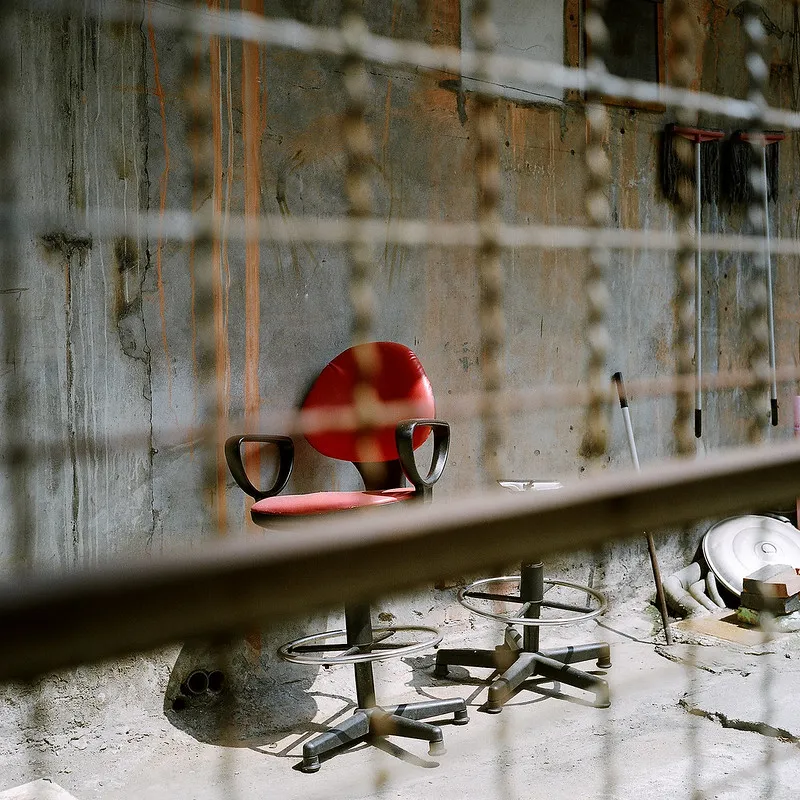


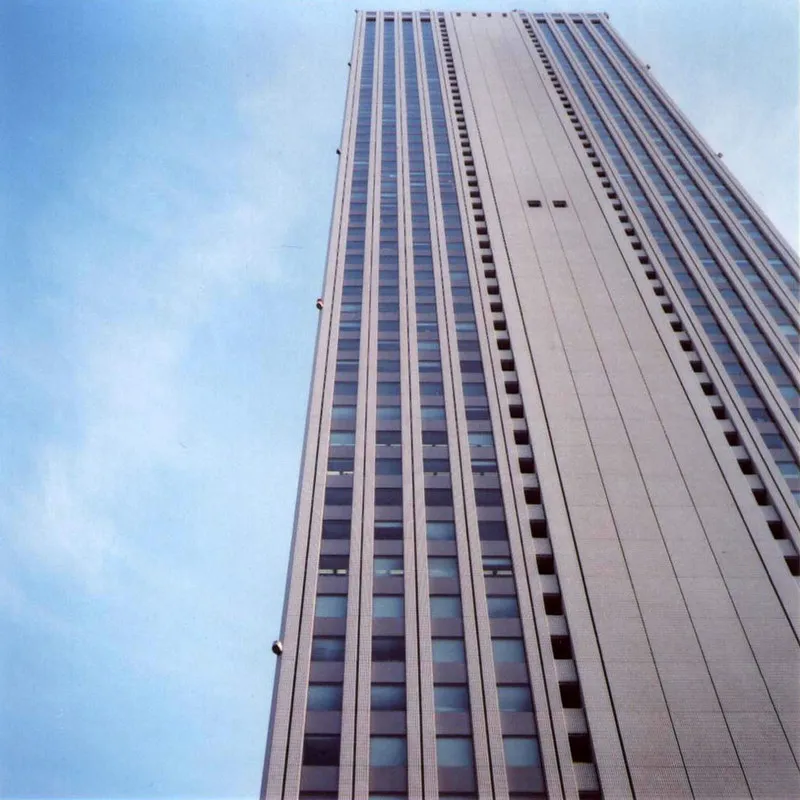
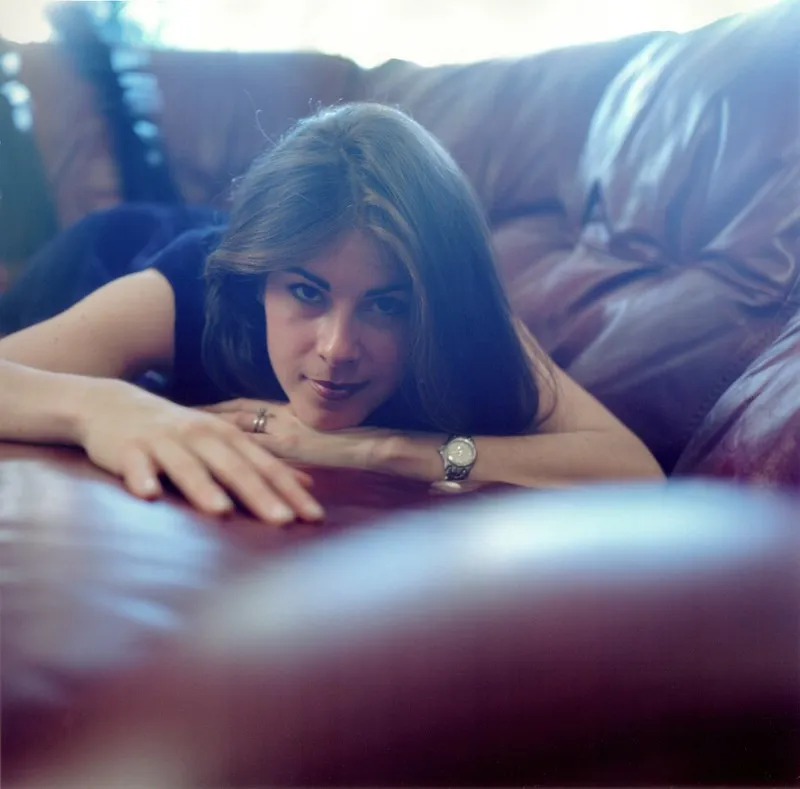
Final thoughts
In conclusion, what we have seen in this Minolta Autocord review is that we are looking at a formidable camera with a lot of history and one of the most important of its kind. Minolta introduced a high-quality alternative in the market of photographic cameras.
It is a camera with a competitive price with the features it has, it is very reliable if you take care of it properly. So if you are just starting out in medium format photography, it is a very good option.
It has everything in one, you don’t have to think about accessories or interchangeable parts, it keeps the simplicity of a Rollei in that sense. It comes as it is. Also, I haven’t mentioned it before but you can also use the filters and hoods of the German one.

Written by Jorge Ferrufino
“I am a fashion photographer and an analog photography enthusiast since the beginning of my career (15 years ago). I have had the opportunity and honor of showcasing my work in various galleries and publications around the world.“
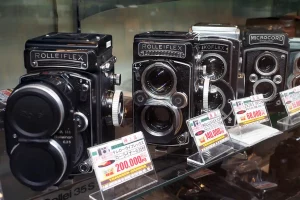

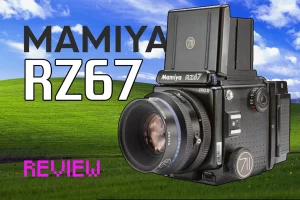
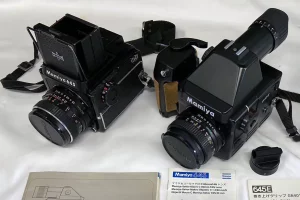

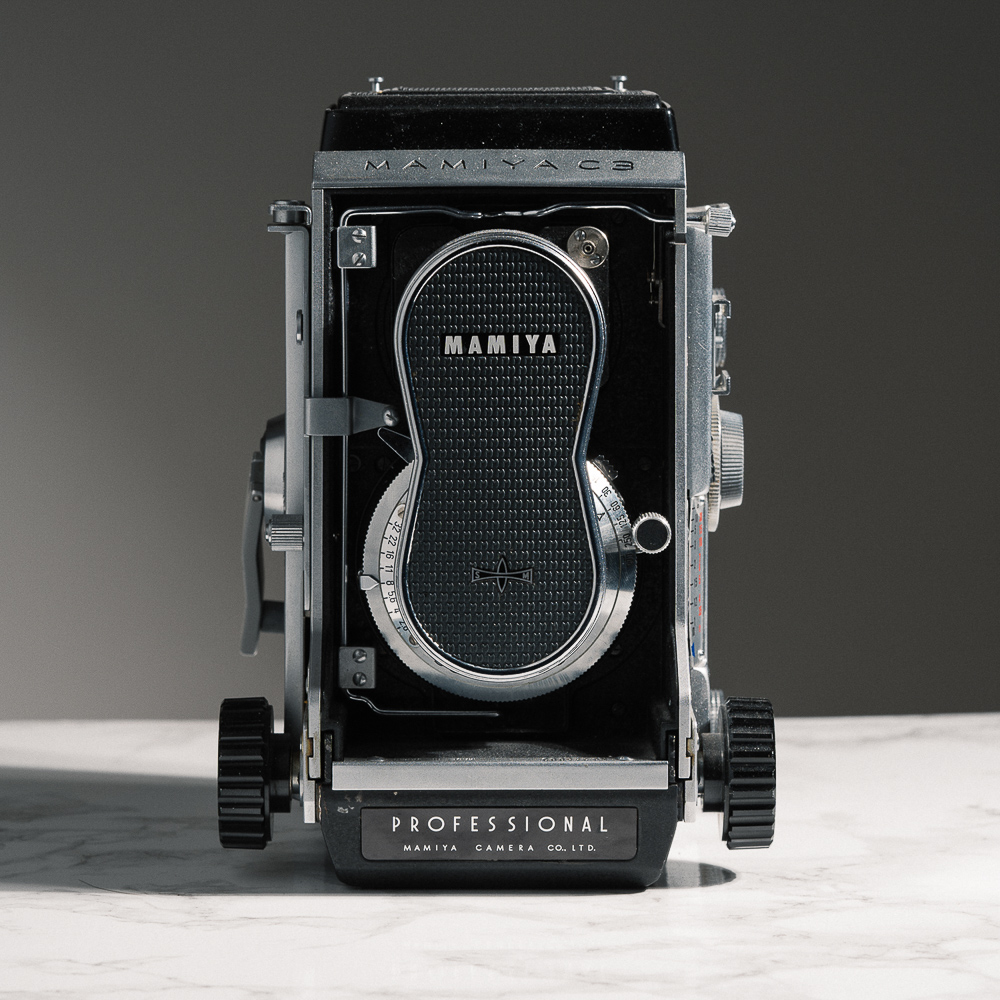
I currently use a Minolta Autocord CDS, still own several film cameras.